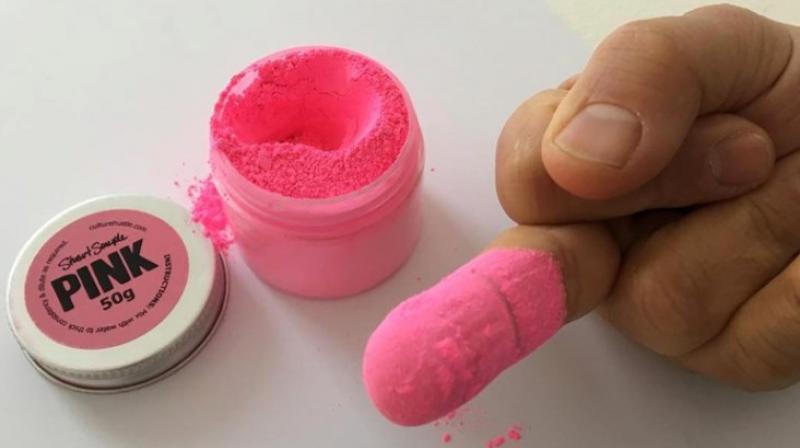Petty in pink
A colour for a colour seems to be the principle when artists get down to being trivial.

It’s funny how cerebral names can resort to non-cerebral ways to prove a point.
Take celebrated artist Anish Kapoor, for instance. The artist who patented the “blackest black” colour — Vantablack — was banned against using the “pinkest pink” colour created by artist Stuart Semple.
And, Kapoor retaliated against Semple, in a way that many believed was petty. He got his hands on the “pinkest pink” and posted a photo with his middle finger dipped in it.
When Kapoor patented the “blackest black” colour, he made sure that no other artist could use it. So, when Semple created the “pinkest pink” colour, he stated that everyone but Kapoor could use it. Which is what caused Anish’s ire.
According to Mumbai-based painter and poet, Sanjeev Khandekar, who recently delivered a lecture on the patenting of colours, the phenomenon is an “internalisation of capitalism”. “What Anish has done is exactly the opposite of what artists around the world are trying to do — to have an open access to general intellect,” he says.
Sanjeev thinks the idea of patenting colours can only draw criticism. “The art world is also a part of the society and today more than aesthetics, art is driven by market, so there is competition. Artists are bloated with ego and often end up making fools of themselves,” he adds.
Meera Menezes, author of Vasudeo Santu Gaitonde: Sonata of Solitude, mentions an incident in her book, which took place on the occasion of the inaugural show of a gallery in Mumbai — “M.F. Husain was apparently livid that (S.H.) Raza had priced his works at a few hundred rupees. He decided that he would play Raza at his own game and price his own works at five rupees each. (Krishen) Khanna remembers being provoked into remarking, ‘Well, at that price, I will buy the lot and paint over them!’ The irony was that these were the very canvases Khanna had left behind in Bombay on his transfer to Madras, and Husain had painted over them! But clearly nobody really minded in those days.”
However, such rifts hardly amuse art critic Alka Raghuvanshi. “This has been going for decades. Take, for instance, the landmark case of Amarnath Sehgal’s work at Vigyan Bhavan, New Delhi, which was pulled down after a fire without the consent of the artist. It had created a huge rift between Amarnath and Satish Gujral,” she says.
It is the desire to be the talking point that drove the artists to such actions, believes Alka. Citing Husain’s strategy, she explains, “If you look at Husain, you’ll see that he almost piggy-backed on Bollywood and the stars. And in a way, he was quite successful too — he reached to the masses, where other contemporaries like Raza or (Akbar) Padamsee couldn’t penetrate.”

